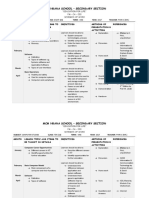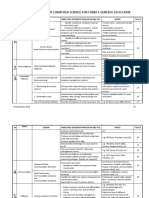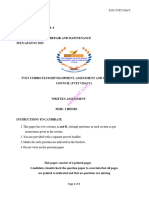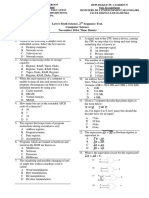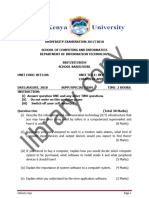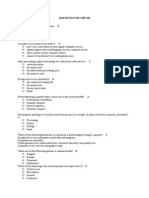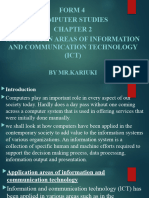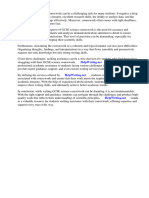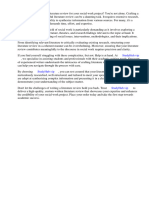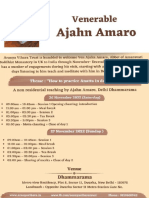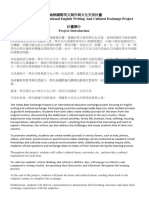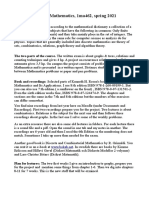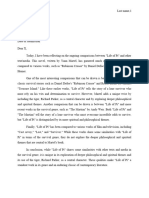0% found this document useful (0 votes)
115 views12 pagesNotes Form 4 Application Areas of ICT Form 4
The document discusses the various application areas of Information and Communication Technology (ICT) in modern society, highlighting its role in enhancing information systems across multiple sectors such as finance, retail, education, and communication. It details specific systems like financial management, retail transactions, reservation systems, and educational tools, emphasizing how ICT improves efficiency and decision-making. Additionally, it covers the impact of ICT on industrial processes and communication methods, showcasing its integral role in contemporary operations.
Uploaded by
philtechsolutions7Copyright
© © All Rights Reserved
We take content rights seriously. If you suspect this is your content, claim it here.
Available Formats
Download as DOC, PDF, TXT or read online on Scribd
0% found this document useful (0 votes)
115 views12 pagesNotes Form 4 Application Areas of ICT Form 4
The document discusses the various application areas of Information and Communication Technology (ICT) in modern society, highlighting its role in enhancing information systems across multiple sectors such as finance, retail, education, and communication. It details specific systems like financial management, retail transactions, reservation systems, and educational tools, emphasizing how ICT improves efficiency and decision-making. Additionally, it covers the impact of ICT on industrial processes and communication methods, showcasing its integral role in contemporary operations.
Uploaded by
philtechsolutions7Copyright
© © All Rights Reserved
We take content rights seriously. If you suspect this is your content, claim it here.
Available Formats
Download as DOC, PDF, TXT or read online on Scribd
/ 12

